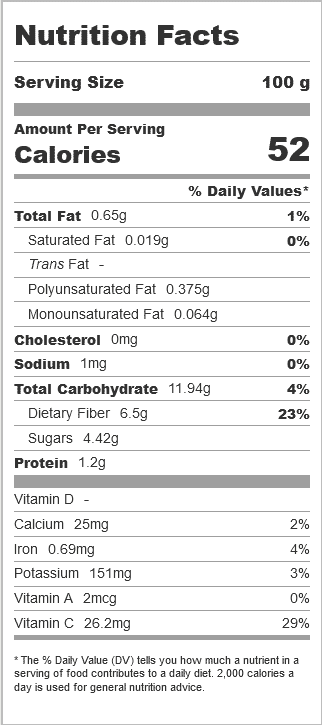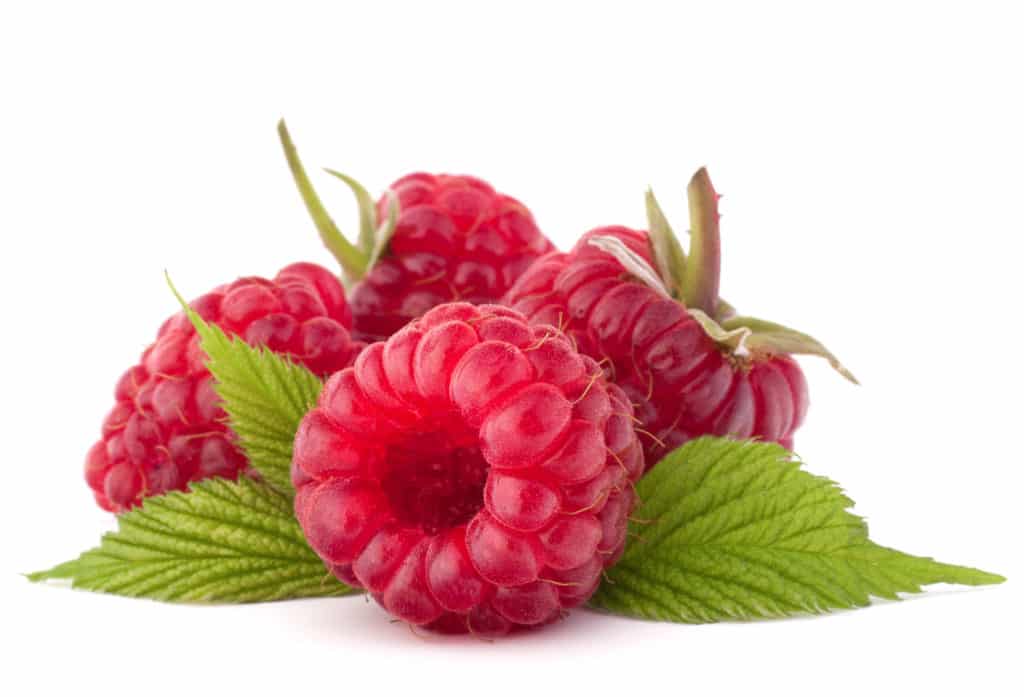What comes in red, purple, and yellow colors, tastes great, and keeps you healthy? If you answered ‘Raspberry,’ then you are right. But are they edible for hamsters? Can hamsters eat raspberries? If so, how much can they eat? What measures should you take before feeding raspberries to your hamster? As a hamster owner, these are some of the questions for which you might have been searching answers. But you don’t have to search anymore. You will find answers to all these questions in this blog post.
Raspberries
Before we find out if your pet hamster can eat raspberries, let’s look at what raspberries are and where they come from.
There are hundreds of types of berries in the world. They come in varied shapes, sizes, colors, and flavors. So, it is only natural that most of us don’t know which fruits are berries and which are not. But it is not entirely our mistake either. Berries are often misleadingly named – A banana is a berry, but raspberry is not. What?!

According to botany, a berry is a fleshy fruit that develops from a single flower with a single ovary. So, bananas, cucumbers, eggplants, grapes, and tomatoes are all berries. Even watermelons and pumpkins are considered berries.
However, fruits like raspberries and strawberries are not considered berries because they form from flowers that have multiple ovaries. So, they are considered aggregate fruits instead (Source: Wikipedia).
However, like most things in our lives, fruits and vegetables were named centuries, if not millennia, before botanists had a chance even to classify them. So, our forefathers probably named strawberries and raspberries so, because these fruits fit their definition of what a berry was – a small, bite-sized, squishy fruit.
Origin
Red raspberry, the most popular type of raspberry, is indigenous to Asia Minor and North America. Around 2,000 years ago, people living in the foothills of Mt. Ida (Greece) gathered wild raspberries and ate them. The Romans then introduced raspberries to the rest of Europe (Source: Washington Red Raspberry Commission).
During medieval times, Europeans used wild berries for medicinal purposes. Their juice was used in paintings. Back then, berries were royal fruits that only the rich people could afford. But in the thirteenth century, King Edward I called for the cultivation of berries. He became the first known person to do so.
But nobody knows when raspberry, specifically, started to be cultivated. The first known historical account of raspberries being cultivated in Europe comes from 1548 when Turner, an English herbalist, talks of raspberries as being grown in “certayne gardines in Englande” (Source: Chat Ham Apples).
At that time, Europeans might have thought of raspberries as being native to Europe. So, the European explorers who landed in the new world were surprised when they found black raspberries growing there. Nonetheless, they brought their own raspberries from Europe and cultivated them in the Americas.
Over the years, these different types of raspberries were cross-bred with each other. As a result, today, more than 200 species of raspberries can be found across the world (Source: Wisconsin department of public instruction).
Now that we know what raspberries are and where they come from, let’s find out if your hamster can eat them.
Nutritional content in raspberries
Raspberries can be a healthy treat for your hamster. They contain a lot of essential vitamins and minerals. The nutritional content in 100g of raspberries is listed below:

(Source: Fat secret)
Things to watch out for
Can hamsters eat raspberry leaves?
Yes, you can safely feed one or two raspberry leaves to your hamster. It can be a healthy snack for your tiny friend. But make sure you wash them thoroughly. This will remove any pesticides that might have been sprayed on the leaves.
Can hamsters drink raspberry juice?
Raspberry juice that you get in stores can contain added sugars and preservatives, which make them last longer. So, they can cause obesity and diabetes in your hamster. So, never give raspberry juice to your hamster.
Can raspberries be dangerous to hamsters?
Raspberry can be a great treat for your hamster. But not all types of hamsters can handle raspberries. For some types of hamsters, raspberries might be dangerous. So, if you are going to add raspberries to your hamster’s diet, start small.
Give one-fourth of raspberry to your hamster. Then watch for any changes in his stool for the next 24 hours.
Does the stool become loose? Does your hamster get diarrhea?
If one of these things happens, don’t give raspberries to your hamster for another week. Then, after a week or two, repeat the above process again. If the results are the same, then stop giving strawberries to your hamster again, or consult a vet.
What to do if my hamster doesn’t like raspberries?
Most hamsters would love the taste of raspberries. However, if your hamster doesn’t like raspberries, don’t feed them again.
Can you mix raspberries with other fruits?
Mixing raspberries with other fruits can add variety to your hamster’s diet. After all, fruits have plenty of vitamins, and mixing them might be a great way to improve the quality of a hamster’s diet.
But remember that raspberries are a high-calorie hamster food. 100g of raspberries contains 52 calories and 4.4g of sugars. In comparison, the same weight of cucumber contains only 15 calories and just 1.6g of sugars. (Also read: Can hamsters eat cucumbers?) So, mixing raspberry with other fruits can easily increase the sugar content in the diet. It may cause obesity and diabetes and affect the health of hamsters. So, only serve one fruit per meal.
Importance of washing the fruit
If you don’t buy organic raspberries, there is a high chance that the fruit is covered with pesticides. But hamsters’ little stomachs could be extremely sensitive to these chemicals. So, wash the fruit in warm water thoroughly to remove any traces of pesticide before giving it to your hamster to eat.
Importance of cleaning regularly
Hamsters are tiny creatures. So, they are extremely sensitive to spoilt foods and the hygiene of the place they live in. So, if you feed a raspberry and your hamster doesn’t finish eating it within 24 hours, remove all the pieces of the uneaten fruit. Also, keep fresh water every day for your hamster to drink and clean the cage regularly.
If your hamster has diarrhea and you don’t clean his cage, the loose stool might stick to the tail of your hamster and lead to a condition called the wet tail. Wet tail can become life-threatening for your hamster. So, if your hamster shows any signs of wet tail – loss of appetite, hunched back, etc. – take him to a vet immediately.
Importance of a balanced diet
Even if raspberries are a great source of vitamins and minerals, your hamster’s diet should contain more than just raspberries. It should contain hamster pellets, hay, and vegetables as well. By giving a balanced diet to your hamster, you can make his diet more and more natural. After all, wild hamsters don’t survive on just one type of food. So, you can offer a strawberry to your hamster from time to time as an occasional treat.
How many raspberries can a hamster eat?
This is a tricky question to answer because it really depends on the breed of hamster you have. Some breeds of hamsters can eat raspberries without any concern, while for others, it might be risky.
Can Chinese dwarf hamsters eat raspberries?
Chinese dwarf hamsters are smaller in size compared to many other species. So, logically, you may be inclined to think that feeding them small pieces of raspberries occasionally should be fine. But unfortunately, that’s not the case. Raspberries contain an acid called oxalic acid which can be harmful (Explained in the health-risks section of this blog post). Smaller hamsters like Chinese hamsters, which drink less water, are more prone to these risks. So, it might be better to not feed them any raspberries at all. But if you still want to give raspberries to your Chinese dwarf hamster, consult a vet beforehand.
Can Campbell dwarf hamsters eat raspberries?
Just like Chinese dwarf hamsters, Campbell dwarf hamsters may be more prone to the health risks of raspberries. So, avoid giving them any raspberries or consult a vet before feeding them raspberries.
Can Russian dwarf hamsters eat raspberries?
Again, no. Either don’t give any raspberries or ask a vet before feeding your Russian dwarf hamster raspberries.
Can Roborovski hamsters eat raspberries?
Roborovski hamsters are the smallest dwarf hamsters. But they are also extremely active. So, they can handle the sugar content in raspberries better than other dwarf hamsters. But the acid content in raspberries might pose a problem. So, it is better not to give them any raspberries at all.
Can Syrian hamsters eat raspberries?
Syrian hamsters are the largest breed of hamsters. So, they can eat a raspberry every week (Source: Hamstersearch).
Can hamsters have raspberries? Are raspberries good for hamsters?
Raspberries are a rich source of vitamins and minerals. They provide various health benefits and are safe to eat. So, hamsters (depending on the type) can have them.
Health benefits of raspberries
1. Every fruit is special in some way. In that sense, a raspberry’s special power is its high fiber content. 100g of raspberries contains 6.5g fiber, which is higher than most fruits. Fiber can make your hamster feel full for a longer time, preventing him from eating too often. Thus, fiber keeps your hamster from getting obese. Fiber can also reduce cholesterol, blood pressure, and blood sugar levels (Source: WebMD).
2. The sugar content in raspberries is pretty low when compared to many other fruits. 100g of raspberries contains only 4.4g of sugars. So, it is less likely to raise sugar levels (Source: Healthline).
3. Moreover, raspberries contain high amounts of tannins. Tannins block the digestive enzyme called alpha-amylase, which helps break down starch. Therefore, raspberries can reduce the amount of carbohydrates absorbed after a meal, thereby reducing sugar levels in the body.
4. According to an experiment, the blood glucose levels in wild mice fed with a high-fat diet for 12 weeks went down when this high-fat diet was supplemented with 5% freeze-dried red raspberry (Source: National Library of Medicine). This indicates that red raspberry can fight against diet-induced obesity in rats. The same experiment also suggests that red raspberry could help rats combat fatty liver disease. Since hamsters, too, are rodents, red raspberry can have similar effects on their bodies as well.
5. Raspberries contain a sufficient amount of Vitamin C. Vitamin C boosts the immune system of your hamster. It also plays a vital part in the production of collagen, a protein that is an important building block of your hamster’s body, found in his skin, bones, ligaments, etc. (Source: Healthline). Thus, Vitamin C is essential to keep your hamster healthy.
6. Raspberry contains several important antioxidants that can keep your furry friend healthy.
Due to the chemical reactions that happen in your hamster’s body or due to outside factors like air pollution, compounds called free radicals are created in your hamster’s body. Free radicals are highly unstable molecules. They are dangerous because, to become stable, they steal an electron. This electron can be stolen from the cells, membranes, or DNA in your hamster’s body. So, free radicals can kill or cause damage to cells in various parts of the body. They can speed up aging and cause various diseases, including cancer. But antioxidants provide the free electron that these free radicals seek. Thus, they prevent damage to your body and your hamster’s body.
Quercetin, an antioxidant found in raspberries, kills cancer cells, reduces swelling, and prevents heart diseases (Source: WebMD). The Gallic acid, another antioxidant found in raspberries, has anti-inflammatory, antimicrobial, anticancer, cardioprotective, neuroprotective, and gastro-protective effects (Source: Iranian Journal of Basic Medical Sciences). So, raspberries can protect your hamster’s body from damage.
7. As a low-fat, low-sugar fresh food, raspberry can help prevent obesity, diabetes, and cholesterol, when taken in moderation.
8. Raspberries also contain Vitamin E. Vitamin E improves the vision and immunity of your hamster.
9. The Vitamin K in raspberries aid in blood clotting and building bones.
10. Raspberry also contains several important minerals. It has sufficient amounts of calcium which is important for your hamster’s bones and teeth. Since hamsters are rodents whose teeth keep growing constantly, calcium is very important for them. The potassium in raspberry helps lower blood pressure and boosts your hamster’s heart health. Iron is necessary for the hemoglobin in the blood, regulates body temperature, and plays an important role in many bodily functions.
Risks
1. Raspberries contain an acid called oxalic acid. When compared to other fruits, they are a high-oxalate food. They contain almost 48 milligrams of oxalates (oxalic acid) per cup (Source: WebMD). Oxalic acid is an antinutrient. It can bind to some minerals, particularly calcium, and affect their absorption by the body (Source: Healthline). Moreover, they can cause kidney stones, particularly if your hamster previously had kidney stones, or if he doesn’t drink enough water, or if he has gut problems. So, you should consult a vet before you feed raspberries to your hamster.
2. Even if your hamster doesn’t suffer from any problems, eating too many raspberries can cause stomach upset (due to the acid content) or diarrhea (Source: Wikipedikia).
3. The sugar content in raspberries might be quite less when compared to other food items. Yet, if you feed your hamster raspberries too often, the sugar content can quickly add up. It can lead to obesity or diabetes.
Summary – Takeaways
The health benefits of raspberries are numerous.
- Raspberries contain important vitamins (C, E, and K) that your hamster needs. Vitamin C boosts immunity, Vitamin E boosts vision and immunity, and Vitamin K improves blood clotting and strengthens bones.
- The minerals it contains are highly beneficial for your hamster’s body. Calcium makes bones and teeth strong; potassium lowers blood pressure; iron improves the hemoglobin count in the blood.
- Raspberries also contain antioxidants like Quertecin and Gallic acid. They kill cancers cells, reduce swelling and prevent your hamster from various diseases.
- They contain tannins, which help in reducing the sugar content in your hamster’s body.
How to feed raspberries to your hamster?
Raspberries rank at the top among foods that have high quantities of oxalic acid. Oxalic acid can reduce the body’s ability to absorb certain minerals and can cause kidney stones. So, despite their health benefits, they are only safe for bigger brands of hamsters to eat. Dwarf hamsters should not be fed any raspberries at all. If you plan to feed raspberries to your hamster, follow the below steps:
- Wash the raspberry thoroughly in warm water to remove any traces of pesticide.
- Cut the raspberry into small pieces (depending on the size of your hamster) to prevent your hamster from choking.
- Raspberries contain higher calories and higher sugar content when compared to some other fruits. So, don’t mix it with other fruits.
- Give a balanced diet to your hamster, which contains fruit, vegetable, hamster pellets, hay, etc.
- Do not give raspberry juice to your hamster.
- If your hamster’s stool becomes loose or liquidy within 12 hours of feeding raspberry, take him to a veterinary doctor.



